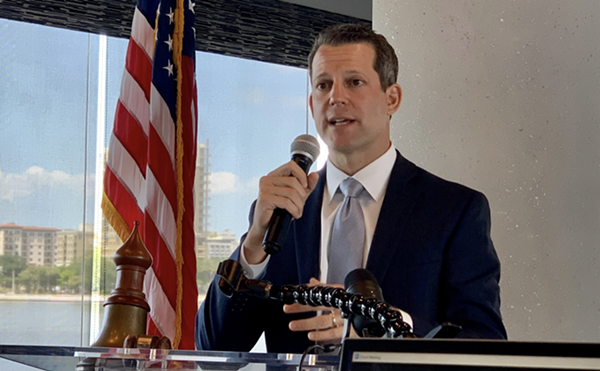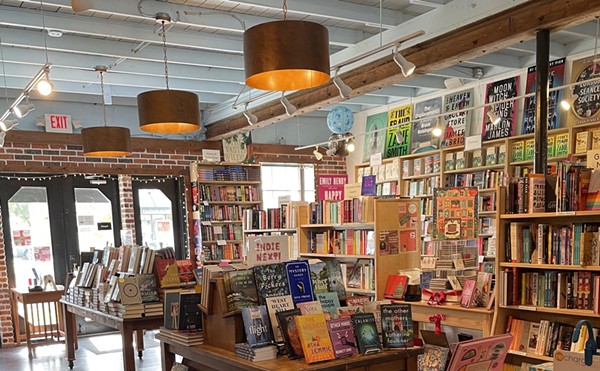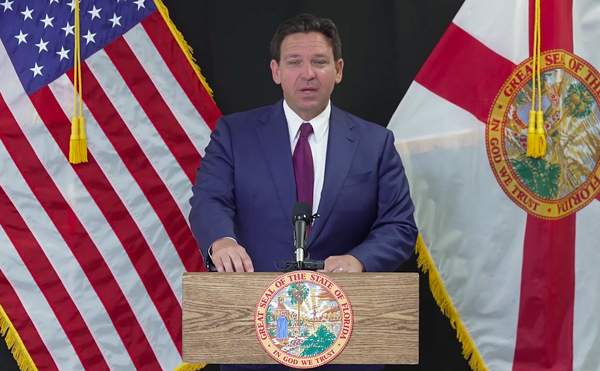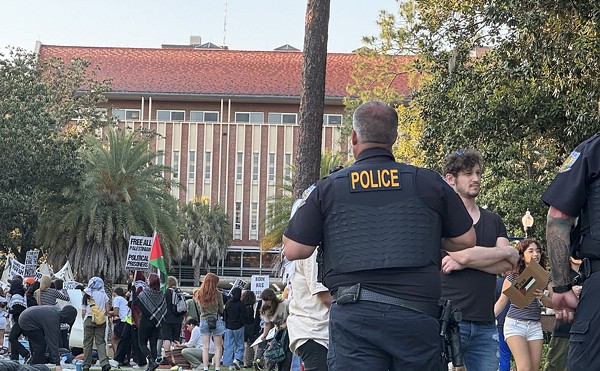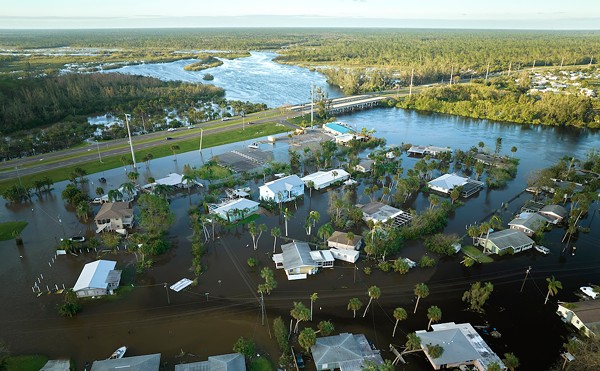
After suffering years of humiliation for its record on bicycle safety — Tampa Bay ranked as the country’s second most dangerous metropolitan area for cyclists in a 2012 Transportation for America study — signs of improvement are appearing. And Tampa, which has lagged behind St. Pete in bike-friendliness, is finally creating some decent routes for bike riders. Safe cycling, like safe sex, will no longer be an oxymoron.
This policy change by city and county government and FDOT is nothing shy of miraculous, but folks in the trenches have been working on it for decades. Since 2008, Tampa BayCycle, bicycling advocacy group par excellence, has shown up at public forums preaching the gospel of investing in bike safety. Co-founders Karen Kress and Julie Bond knew what politicos needed to hear in order to justify investing public dollars in this infrastructure. They pointed out that we spend less than 1 percent of our transportation funding on bicycle and pedestrian improvements.
Statistics of deaths and injuries grew, and the tide of public opinion began to turn. Seminole Heights, Tampa’s best-organized neighborhood, began weekly rides aimed at different skill levels. HART installed racks for the Bikes on Buses program.
St. Pete’s former mayor, Rick Baker, grabbed the limelight by creating citywide paths and trails specifically for bicycling. The Pinellas Trail’s popularity soared. Other cities won acclaim for their bike-friendliness and bike-sharing programs.
Finally, in 2014 the shift occurred…
The new FDOT Complete Streets policy, adopted in September of 2014, takes the radical stance that bicyclists and pedestrians have rights, too. Bike lanes are being painted even as we speak. Fowler Avenue is being resurfaced and the repainted stripes will afford cyclists a total of 7 feet of separation from the cars.
Fletcher Avenue, identified as the most dangerous road in the entire region, has a ribbon-cutting on January 27 at 2 p.m. from the McDonald’s parking lot to show off new features, which range from bike lanes to lit, signed, mid-block crossings aimed at improving safety between I-75 and USF.
Coast Bike Share is finally underway (see related story), with rental stations sprinkled throughout downtown Tampa, Ybor City, Hyde Park and Davis Islands. Now we have 100 distinctive blue bikes on the streets, expected to increase to 300 bikes and 30 stations by year’s end.
Opening in March, the Selmon Greenway, a 1.2-mile-long, 12-feet-wide paved path will wind through downtown from Adamo Drive on the east, run under the Expressway and link to the west side of the Riverwalk. Funded through a federal grant, thanks to U.S. Rep. Kathy Castor, and paired with City of Tampa and Expressway funds, this barebones path will provide a safe, shady east-west link...though it needs some future amenities, such as benches, trees, trash receptacles and ice cream vendors.
Kress, who is also on staff for the Tampa Downtown Partnership, enthuses, “We’re hoping to launch a bicycle-friendly business district program in downtown very soon. Tampa has made great strides the last few years and some important biking infrastructure will come on line in the near future.”
Platt and Cleveland streets, a matched two-way pair leading west from downtown, are being repaved and striped as a safe alternative to riding along Kennedy Boulevard. Bayshore Boulevard is adding southbound bike lanes between Howard and Rome avenues (and a grass-roots initiative called Care(e)Free Bayshore is pushing the city to close northbound lanes to vehicle traffic from dawn to dusk on Sundays). Tyler Street is getting a striped lane, but the best improvement of all is the “Green Spine,” a separated lane protected by concrete barriers which will extend from Homer Hesterly Armory in West Tampa heading east along Cass Street until it reaches Ybor City’s Cuscaden Pool.
While striped separations are a first step, bollards are better, and separated lanes are the aspiration. There’s nothing like a decent wall between the bicyclist and the car to create safety, and that’s what the public wants.
Jim Shirk, a civil engineer and cycling advocate, explains, “The indicator species for bicycling is women. Guys are crazy, but women are not willing to risk their lives...bicycling must be safe to be acceptable.”
Mayor Buckhorn gets it, City Council gets it, law enforcement gets it (and they look great in their biking shorts), and the County Commission is evolving. We’re literally moving in the right direction.





